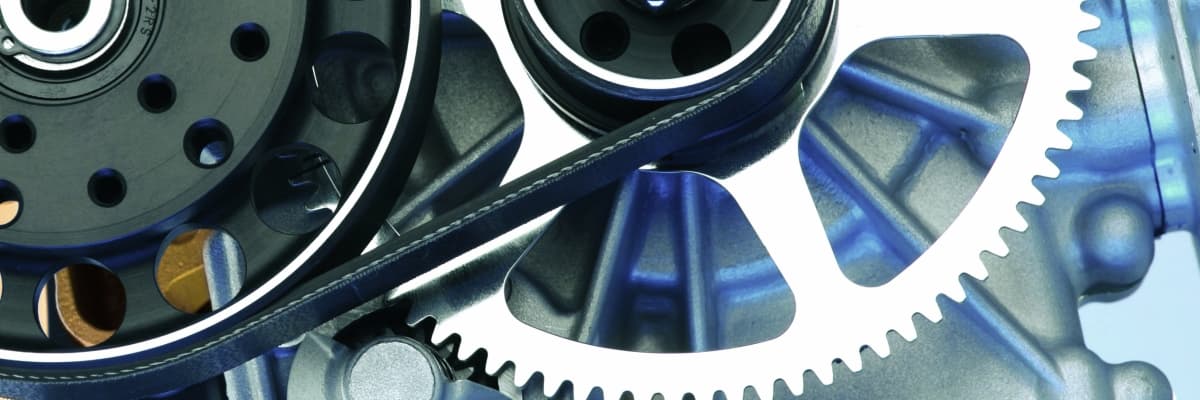What Is Temperature Resistance of Drive Belts?
The temperature resistance of belts is based on their construction and material.
The advantage of belt transmissions is that they can operate in a wide temperature range with virtually no major maintenance.
In the range of normal temperatures from −20 °C to +60 °C, there are usually no usability problems. However, machine manufacturers are constantly increasing the performance and durability of their equipment and they are demanding durability at both extremely high and low temperatures.
Thanks to material, design and technological innovations, the temperature resistance and service life of belts have been significantly increased in recent years.
V-Belts
| Belt Name | Type | Temperature Resistance |
|---|---|---|
| CONTI V | Classical wrapped V-belts |
−55 °C to +70 °C (short-term up to +80 °C) |
(formerly CONTI-V FO PIONEER) |
EPDM raw-edge toothed V-belts |
−40 °C to +130 °C |
Timing Belts
| Belt Name | Type | Temperature Resistance |
|---|---|---|
| CONTI SYNCHROBELT | Standard rubber timing belts |
−20 °C to +100 °C |
| Heavy-duty HNBR rubber timing belts |
−30 °C to +130 °C |
|
| CONTI SYNCHROFLEX | Standard polyurethane timing belts | −30 °C to +80 °C |
| CONTI SYNCHROFLEX GEN III | Heavy-duty special polyurethane timing belts | −30 °C to +100 °C |
| Heavy duty polyurethane timing belts for extreme applications |
−55 °C to +80 °C |
In the short term, materials can withstand higher temperatures. However, service life may be affected.
Decisive Value Is Actual Belt Temperature
A belt transmission consisting of a belt, pulleys, tensioning or guide pulleys is part of the machine, motor, etc. The decisive value is the actual belt temperature, which can be significantly different from the ambient temperature or the temperature in the working space of the belt transmission.
The most accurate information about the actual temperature of the belts can be found by measuring with digital thermometers. This is very important, especially in the area of limit temperatures.
Operation at Too High or Too Low Temperatures
If the actual belt temperature is high for a long time, the properties of the material used change. The material hardens, loses elasticity, the coefficient of friction changes, the belt slips and does not transmit the required power. Friction worsens the condition until the belt is destroyed. If the belt temperature is too low, the belt hardens, becomes brittle, loses elasticity, and can be destroyed by sudden loading.
Under certain conditions, generated heat can also have a positive effect, e.g. in areas with severe frosts. During continuous operation, the belt heats up due to operation and its operating temperature is in the range of temperature resistance values, even though the ambient temperature is for example −45 °C for a short time.
Other Influences on Belt Operation
In addition to temperature, the properties of rubber and plastics are also affected by the surrounding environment, weather conditions, humidity, UV radiation, chemical effects, dust and many other factors. In real operation, there is always a combination of all the different influences.
Changing material properties must also be taken into account. If we calculate the belt drive correctly, use quality components and perform proper assembly, it should be guaranteed that the transmission will work reliably. However, we must not forget to check the transmission regularly. Every material changes its properties as it ages. The elasticity and coefficient of friction of rubber change with age. Depending on the material, each part loses its properties and must be replaced after a certain time.
Recommendations for Long-Term Belt Temperature Resistance and Service Life
-
Design the belts according to the ambient temperature (temperature in the work area)
-
The actual belt temperature must not exceed the temperature resistance of the material
-
If you do not know the temperature of the belts, take the measurement
-
Check the influence of the environment (air, humidity, UV radiation, dust, chemicals, etc.)
-
Eliminate the slip – set the correct preload and check it regularly
-
Do not overload the drive – perform the calculation, select a sufficient width or number of belts
-
Design the belts with regard to the method and number of starts, shocks, etc.
-
Monitor the condition of the belts (aging), replace the belts in time
Belt Temperature Decrease by up to 17 °C When Using VTP V-Belt Pulleys
A study has proven a decrease of the temperature of belts with VTP V-belt pulleys by 10 to 17 °C compared to standard pulleys. These pulleys are made of high-strength ductile iron GGG40. They have a perforated lower part of the groove and the heat is better dissipated outside the belt during operation. Punching does not affect the strength of the pulley.
Tests show that the belts after 2 hours of operation in the VTP® SPB250-4 pulley have a temperature more than 10 °C lower than in the standard SPB250-4 pulley.


Do you need advice on selection?
For more complex cases, when combining different influences and limit temperatures, contact our technical department.

